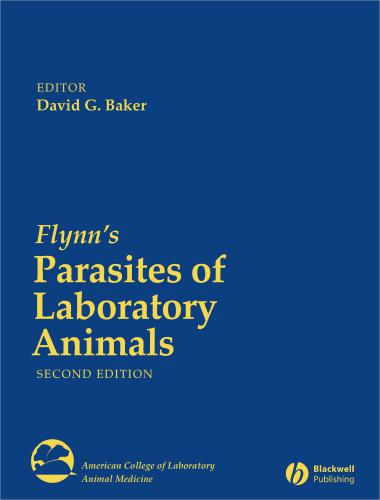Flynn’s Parasites of Laboratory Animals 2nd Edition by David G. Baker, an excellent college-level reference for advanced students of veterinary science.
Flynn’s Parasites of Laboratory Animals 2nd Edition

From the biology of the protozoa to parasites of rabbits and hamsters, mice and birds, reptiles to dogs, cats and even sheep, edits FLYNN’S PARASITES OF LABORATORY ANIMALS offers up extensive chapters packed with black and white photos, tables and charts, diagnosis, hosts, lifestyle, and pathologic effects, and more.
So, with all of these improvements, why is a new edition of this text warranted?Several reasons may be offered. First, in spite of the improvements in the components of animal care listed above, parasites continue to be found in and on laboratory animals. There are several possible reasons: infections or infestations were never completely eliminated from particular facilities; were inadvertently imported with incoming animals, either as a result of contamination during shipment or because parasitism was enzootic at the original location; entered the facility from feral animals in the local environment; or were carried in or on personnel and transferred to colony animals.
A second justification for revising the first edition is that animals in the wild are occasionally still collected and brought into the animal facility. While quarantine procedures should prevent transmission of parasites from wild to laboratory stock, trans-mission nevertheless occasionally occurs. Thirdly, the tremendous rise in the use of transgenic animals, some of which are immunologically compromised, provides opportunity for infections and/or infestations to take hold where such would not be the case with immunologically competent animals.
Dr. Baker has done an outstanding job of updating and expanding the classic Flynn’s Parasites of Laboratory Animals. This new edition has chapters summarizing the biology of each class of parasites as well as a chapter for each commonly used laboratory animal. This is the definitive text on the subject, and will likely remain that way for many years like its previous edition.
| PDF Size: 10 MB | Book Download Free |
Password: pdflibrary.net
Password: pdflibrary.net

1